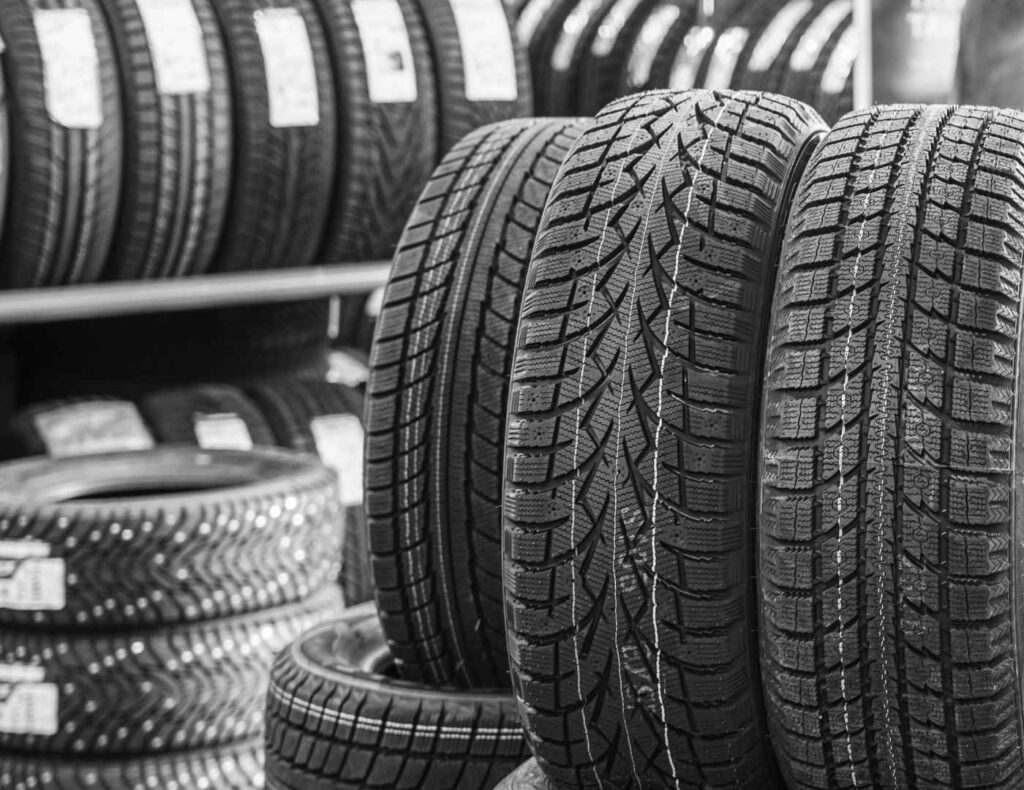Introduction
Tire pressure may seem like a small detail, but it plays a big role in your vehicle’s performance and your safety. Most drivers know the risks of underinflated tires—but overinflation can be just as damaging, leading to poor handling, uneven wear, and even dangerous blowouts.
In this blog, we’ll cover the 5 telltale signs your tires might be overinflated, explain why this happens, and share actionable tips to help you avoid costly repairs—or worse, an accident.

What Causes Overinflated Tires?
Overinflated tires occur when too much air pressure is added beyond the manufacturer’s recommended limit. This can happen due to:
Misreading tire pressure gauges
Using unreliable gas station air pumps
Inflating without adjusting for weather or altitude changes
Lack of awareness of the correct PSI (pounds per square inch) for your vehicle
Whether it’s from human error or environmental factors, overinflation leads to reduced traction, uncomfortable rides, and safety hazards.
Let’s explore how to recognize the warning signs before it’s too late.
Sign #1: Uneven Tread Wear (Especially in the Center)
One of the earliest and most visible signs of overinflated tires is center tread wear. When a tire is inflated beyond its ideal PSI, the center of the tire bulges out and makes more contact with the road than the outer edges.
What to look for:
Tread in the middle is worn out faster than the edges
Tires appear more rounded than usual
Decreased tire lifespan
Why it matters: Uneven wear reduces grip, especially in wet or slippery conditions, and shortens the usable life of your tires—leading to early replacement costs.
Sign #2: Bumpy, Uncomfortable Ride
Overinflated tires are stiff and rigid, meaning they don’t absorb shocks from the road as effectively. The result? Every pothole, crack, and bump becomes painfully noticeable inside the cabin.
Symptoms may include:
Excessive road vibrations
Harshness over speed bumps or rough terrain
Increased cabin noise
Impact: Over time, this not only affects your driving comfort but also puts stress on your suspension system—leading to wear and tear on shocks, struts, and other components.
Sign #3: Poor Road Grip and Handling
The more a tire is inflated, the smaller the contact patch (the part of the tire that actually touches the road). Less surface area means less grip, which can compromise your control—especially in rainy or snowy conditions.
Warning signs:
Slippery or unstable handling in wet conditions
Longer stopping distances
Tires feel “twitchy” during cornering
Safety tip: Reduced traction increases the risk of hydroplaning and reduces braking effectiveness, especially in emergency situations.
Sign #4: Steering Feels Too Light or Sensitive
If your steering feels overly sensitive or you’re constantly making small corrections, overinflation may be the root cause. Since less tire rubber is in contact with the road, your car responds more dramatically to steering input.
Possible symptoms:
Wandering or drifting at highway speeds
Sudden turns feel too sharp or unstable
Less predictability during evasive maneuvers
Result: You may experience a false sense of agility, when in reality, you’re compromising your car’s balance and control.
Sign #5: Increased Risk of Tire Blowouts
Perhaps the most serious danger of overinflated tires is a blowout. Excess air pressure stretches the tire’s internal structure beyond its limits. Add heat from high-speed driving or a sharp object on the road, and the results can be explosive—literally.
Key risk factors:
Driving at high speeds with overinflated tires
Hot weather or long-distance highway driving
Hitting a pothole or debris at speed
Blowouts can lead to loss of control, especially on highways, and are a major contributor to roadside emergencies and accidents.
How to Prevent Overinflated Tires
The good news? Overinflation is completely preventable. Follow these best practices to keep your tires—and your passengers—safe:
Check Tire Pressure Regularly
Use a reliable, digital tire pressure gauge to check your tire pressure at least once a month and before road trips.
Always Use the Manufacturer’s Recommended PSI
Find this number on the driver’s side door jamb sticker or in your owner’s manual—not on the tire sidewall. The sidewall shows the maximum PSI, not the ideal pressure.
Inflate When Tires Are Cold
Tires heat up as you drive, increasing pressure. Always check and fill your tires when they’re cold—ideally before you’ve driven for the day.
Account for Temperature Changes
For every 10°C (18°F) rise in temperature, tire pressure can increase by 1–2 PSI. Adjust seasonally to prevent overinflation during hot weather.
Use Quality Air Pumps
Not all air pumps are created equal. Avoid outdated or inaccurate service station pumps. Instead, use a calibrated home air compressor or visit a professional tire shop like Mr. MechaniQ.
Why This Matters: It’s About More Than Tires
Proper tire inflation isn’t just about prolonging tire life. It directly affects:
Fuel economy
Braking distance
Vehicle safety
Passenger comfort
Overinflated tires may seem like a minor issue, but the risks add up fast—especially if you’re frequently driving at highway speeds, carrying heavy loads, or navigating unpredictable weather conditions.
Let Mr. MechaniQ Help You Stay Safe
At Mr. MechaniQ, we take tire health seriously. Whether you’re unsure about your tire pressure or want a full tire inspection, our certified technicians are here to help.
Our tire services include:
Precision tire pressure checks
Tire rotation and balancing
Tread depth inspection
Suspension diagnostics
Book your appointment today to ensure your tires are in peak condition and your ride is smooth, safe, and fuel-efficient.
Final Thoughts
While most drivers check for flat or underinflated tires, overinflation is often overlooked—and equally dangerous. By watching for these five signs and keeping your tire pressure within the recommended range, you’ll improve your vehicle’s performance, protect your investment, and most importantly—stay safe on the road.

